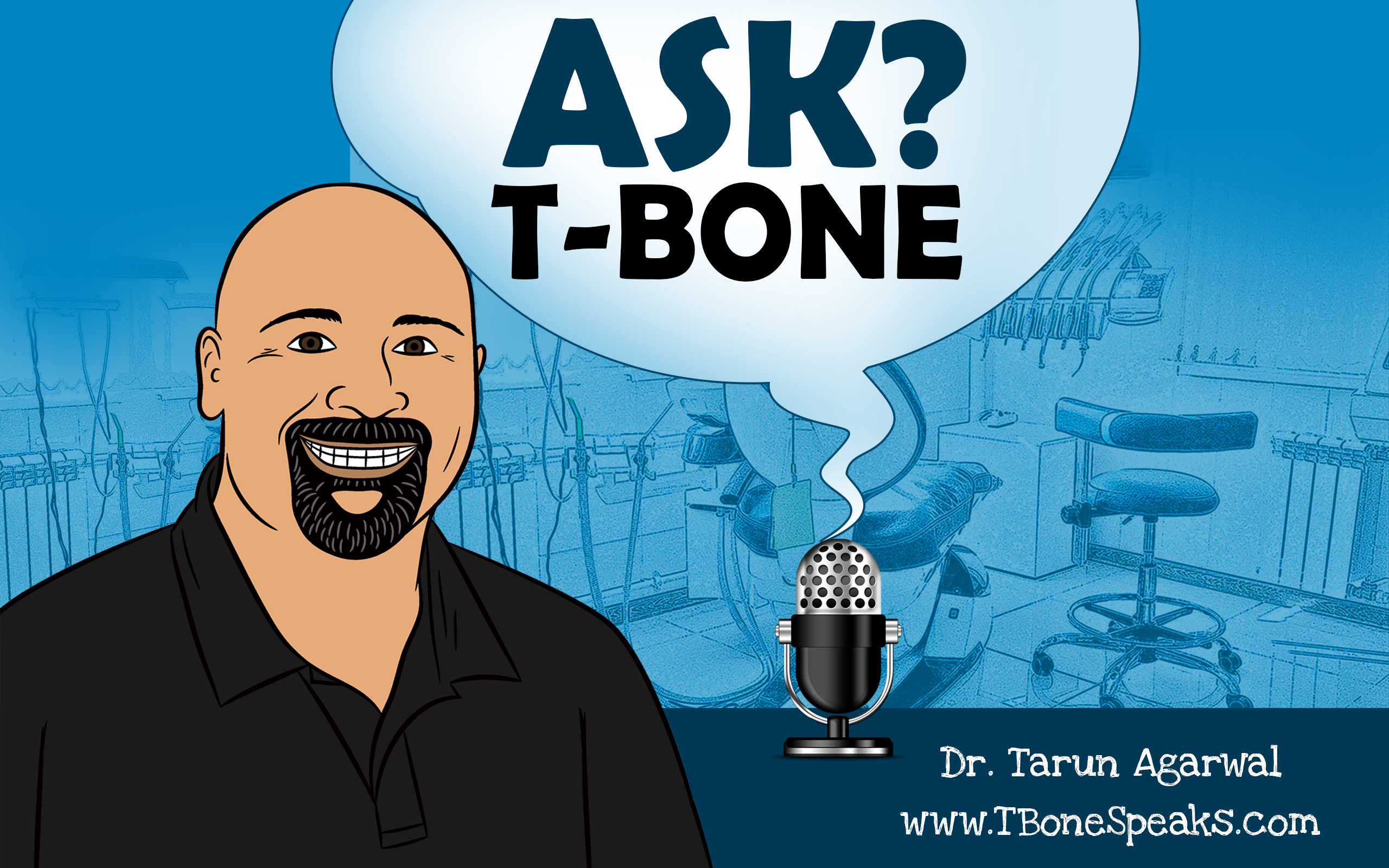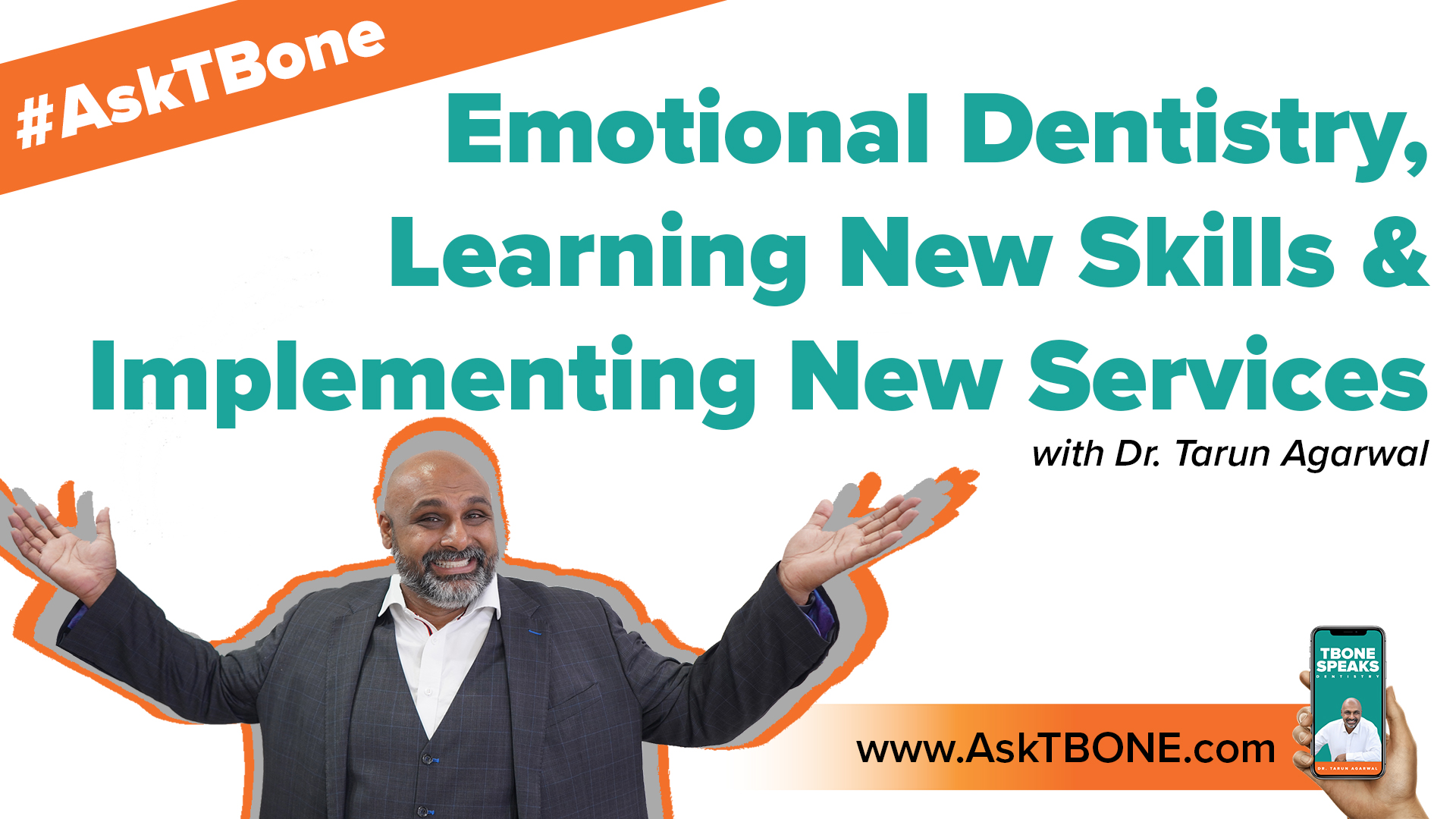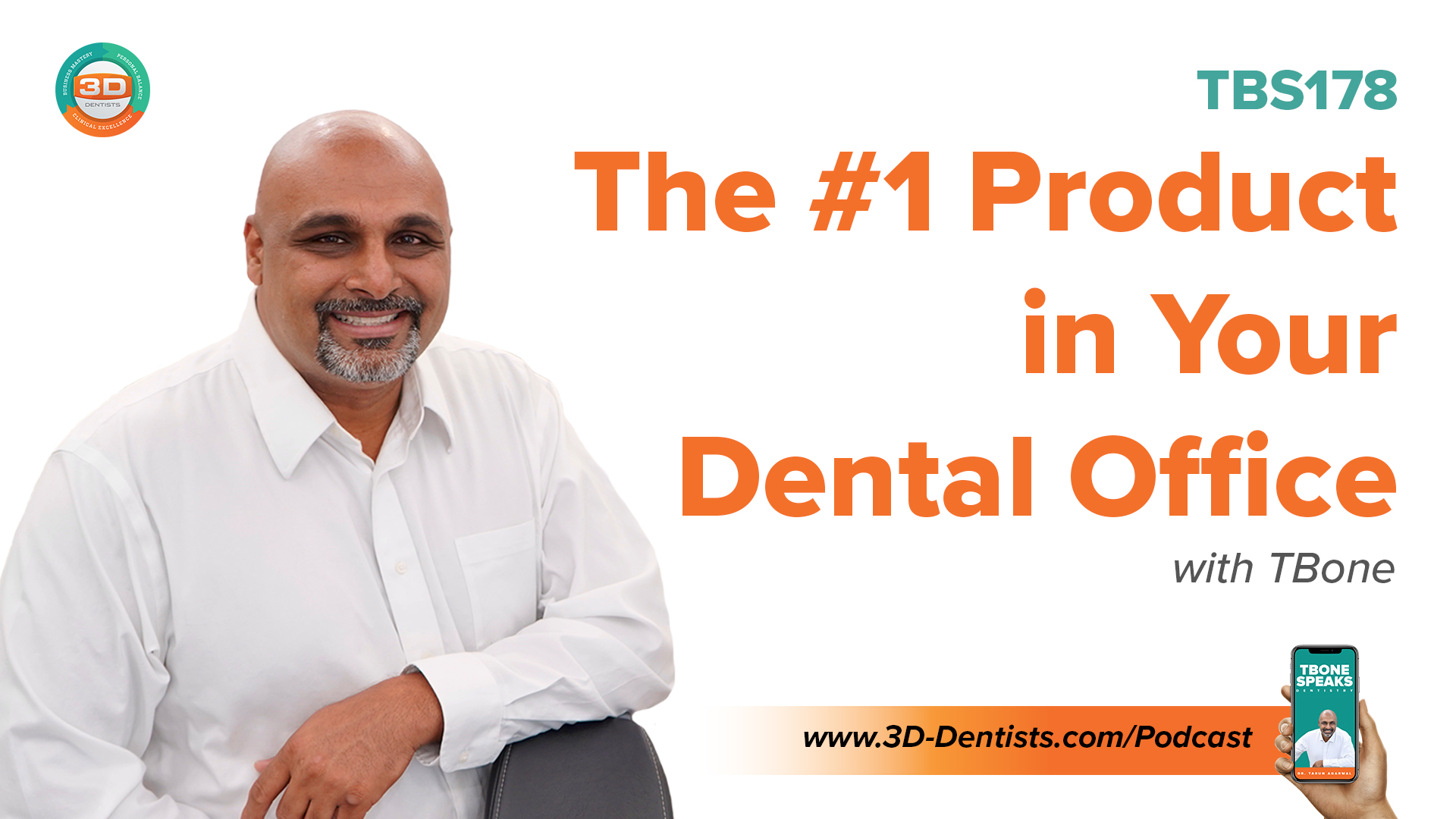Hello and welcome back for another episode of ask T-Bone.
Today we’ve been submitted a question, and I would like to read the question as it was submitted.
Dr. Agarwal, a big fan of the podcast -thank you very much, means the world to me that you enjoy the podcast- looking at attending a couple of courses in Raleigh and have a few questions. I’m looking to increase my knowledge base in sleep apnea. Been treating since 2009, but would like to learn how to make it work more for the practice. Class looks interesting, if I come would it be benefit in bring in a dental assistant? I would like someone in the practice who can answer questions. This ties into medical billing. Assume that would be beneficial to have a team member there as well. Looking at adding a CBCT for Implant placement, currently getting scans done by the endodontics. How much practical use to CBCT have an airway if you are scanning and awake patient standing up? How medical billing is working with that?
Thanks.
Well certainly there is a three or four different parts to this question. So let’s kind of started so this person is looking to attend a couple of classes in Raleigh, but one of the things that we do, we have several different by workshops at my office in Raleigh, North Carolina, that are focused on practice growth, and one of them is on sleep apnea. And that’s actually led by dr. Aaron Elliott, who is an expert in sleep apnea. And one of the things that makes our class unique, and the question talked about how the person submitting the question has been treating sleep apnea since 2009, but would like to make it work better on the practice. One of the things that I have found very common, especially sleep apnea, is a lot of people are taking lots of courses on this and attended lots of seminars and events around sleep apnea, but the big challenges is that many of these events are very scientific in nature. In other words I
it spends so much time on the science, that there’s no real focus on implementation. And part of the challenge in that comes from the fact that the vast majority of those who are experts in sleep apnea have practices that are totally built around sleep apnea, in other words, their practices are solely sleep practices, and they’re heavily referral-based, and they’re heavily root word of mouth based. And that is unbelievably wonderful for them. But for those of us who are focused on adding sleep apnea into our general practice, lot of these courses are very useful in the sense of learning the knowledge, but they’re, impractical in the sense of how to add this within your busy practice. So our Workshop is going to focus on how to implement this within a general practice. And what I like to do is, I always break everything down into a few steps, and to me a sleep apnea implementation has four steps:
Step number one: Creating awareness
Step number two: Diagnosis
Step number three: Financials
Step number four: Treatment.
Awareness, is the most important part, you have to create awareness for your patients.
Diagnosis, you cannot provide sleep apnea, I mean you know, you can’t get a diagnosis for sleep apnea other than through an MD, so diagnosis is important when the patient has a preexisting diagnosis. Whether you send the patient home with the HST, or whether you send the patient out for in-lab PSG test.
Financials: Financials are all your patients to self pay? Or your patient have medical insurance? And financials include the medical insurance portion of it. Medical insurance, I want to get into but is the second part of the question.
And then there’s treatment, and that’s the actual part of treating the patient, what kind of sequence do we have? How we doing some objective measurements to make sure that our therapy is working? So we like to focus on, really the workflow of sleep apnea within the practice.
Now, would it be of importance to have an assistant there? Absolutely. I believe that as you develop the therapy for sleep apnea in your practice you must have, in my opinion, a dedicated person who owns sleep apnea. And no one’s better that than have an assistant that can do it, and by owning I mean, they own the clinical aspect of it. And this person, depending how good they are can even own the financial aspect of it, and medical insurance. Because, quite honestly, sleep apnea is one of the easiest claims to get paid as long as you play their game.
And dot your I’s and cross your t’s.
So, I’d highly encourage you to have a dedicated assistant in your practice.
Now, the second part of this question is, it ties into medical billing?
Assume that would be beneficial to have a team member there as well. I could not imagine doing medical billing without a team member. In fact it needs to be team-driven. You, the doctor need to do the note, to do the diagnosis, procedure codes as well, but you need a team member that can follow through. And I break medical insurance in specifically for Sleep into four steps:
Step number one is eligibility.
Step number two is pre-authorization.
Step number three is claim submission,
and step number four is claim follow-up
Eligibility: This can be done before you have the sleep study quite honestly, and this is determining what kind of injectable to patients has, what kind of co-pay, co-insurance the patient has, and ultimately making an educated guess on how much out-of-pocket the patient will have, assuming that they get medically diagnosed for sleep apnea.
Pre-authorization: That’s dotting your I’s and cross your t’s. That’s where you need to go to the insurance and get authorized in advance to provide this type of treatment. This require a let of medical necessity, this will require some affidavit forms for your patient depending on the level of severity of sleep apnea, and several other things there.
Then the claim submission: Quite honestly that should be done electronically, as long as you done your pre-authorization and all your paperwork is in order, the claim submission is quite easily and claim follow-up is almost non-existent if you follow the process pretty well there.
So I want to have a team member to own medical billing in their practice, and if you’re just doing sleeping in medical billing, you may want to consider a third-party and that part out. Or you can have the same assistant who is running the Sleep portion of your practice also do the medical billing for sleeping.
Now, the third part of the question was looking at adding CBCT for implant placement. Currently getting scans done by my endodontist. And how practical is CBCT and Airway?
First let me Begin by saying CBCT and implantology go hand-in-hand, they just fit together. Allows you to have X-ray vision and see exactly what’s going on. Allows you to fabricate a surgical guide to get a precision implant placement. Now, congratulations, is great that you’re getting your scans done by the endodontist. Unless the endodontist is within your practice and literally in your office suit, I am a firm believer of vertical integration, and by that I mean for every patient that you send out for a scan, there’s one more patient that won’t go get it done. So when you have that ability to have that CBCT directly in your office, and make it convenient for your patience to take the X-ray, then you have no issue. And then if you can make it convenient for yourself to take the X-ray, it’s even easier for your patient. So if you think you have a tremendous success with them now, imagine what’s going to happen when you have the CBCT directly within your office. Now, how much practical is to use Airway haved with CBCT? this is not about one of the patients awaken, of the patient standing up. Quite frankly CBCT has no diagnostic value in sleep apnea this stage in the game. Really all CBCT has for Airway, at this point is that, first step of sleep apnea implementation which is awareness. It allows you to create awareness to your patients allows you create segmentation, have a visual representation of what’s going on, how big the tongue is, where the soft palate is, how large the airway is and if its biggest and the smallest, and being able to communicate that with the patient. What we found is that CBCT while not diagnostic, has really opened up a discussion and allowed us to talk to patients of that. Now, how does medical billing working with CBCT I believe we just actually did Ask T-Bone segment on medical billing and CBCT, I really encourage you to take a look at that, but what I can tell you in our experience in this, again I’ve been to CBCT owner for nearly nine years now, and we’ve only been utilizing medical insurance about two and a half years, and I shoot myself every time I think about it, I want to shoot myself just thinking about all the money I let go and how long I was paying for my CBCT out of my own pocket, versus utilizing medical insurance. In our practice we have found that medical insurance is paying for CBCT about 20% of the time. So what I would tell you is that CBCT and medical insurance go hand-in-hand together. CBCT has no diagnostic role in sleep apnea this time, but has a great role in creating awareness for your team members and for your patients, and for assessments of Airway size before and after.
So again thank you guys for submitting your questions. Hopefully it found this helpful and if you guys could do me a favor please encourage your friends to subscribe to our podcast.
Continue to visit www.tbonespeaks.com and submit your own question and certainly we look forward to seeing you at our workshops in Raleigh and if you want more information on our workshops to visit www.3d-dentis.com.
Thank you and have a wonderful day!
Enjoy The Show?
- Don’t miss an episode, subscribe via iTunes, Stitcher or RSS.
- Leave us a review in iTunes
- Join the conversation by leaving a comment below!








